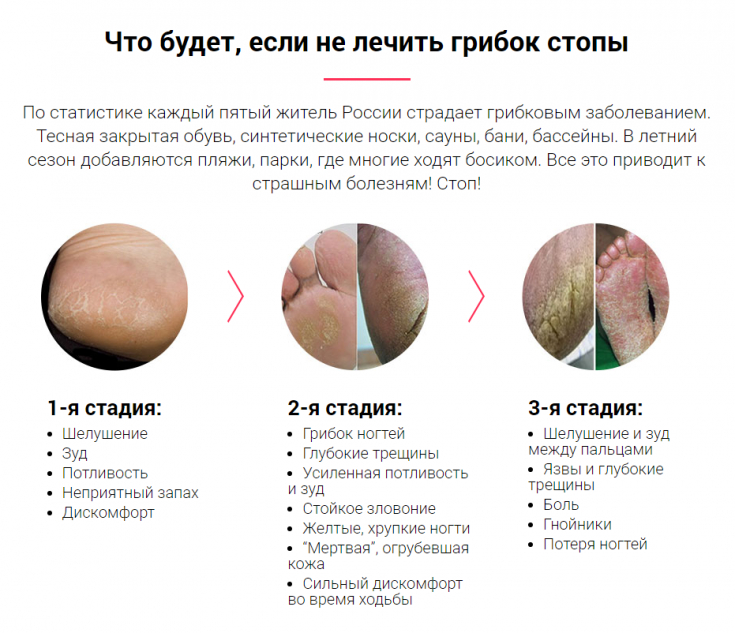— is a collective term for the most common type of fungus that causes skin and nail infections. Dermatophytes have the ability to penetrate keratinized tissues (skin, hair and nails). The infection is usually limited to the outer layer of the skin (epidermis). Skin between fingers — frequent site of fungal infection. The skin may become white and macerated, and blisters may form. They can rupture and spread to other areas of the foot, especially the sole, where the area becomes red and moist. In addition, spots with hard thickened skin appear on the soles, heels and sides of the foot. This may cause cracking of the skin.
Fungal nail infections (onychomycosis) can affect the entire nail plate, and one, several, or all of the toenails can be infected at the same time. Nails often appear discolored and may thicken and change in texture.
Fungal infectionsof the nail are often associated with a skin infection, in which case they can be a source of reinfection if only the skin is treated. In the article estet-portal.com you can read in detail the results of the Cochrane systematic
review of the effectiveness of modern antifungal medicines. Treatment of fungal skin lesions of the foot: what is effective
Of the 144 studies identified, 67 studies met the inclusion criteria. All antifungal compounds have shown some success in treating fungal infection. The best results have been seen with allylamines, and there is little evidence that butenafine may be as effective.

There is limited evidence of the effectiveness of tea tree oil in skin fungal infections. Azoles may also be more effective than tolnaftate, but they are no more effective than undecanoic acid.
Follow us onInstagram Onychomycosis: topical drugs for treating fungal nail infection
There is little evidence that topical antifungals are effective in treating onychomycosis or fungal nail infections. There is some evidence that ciclopiroxolamine and butenafine are effective, but they must be used daily for extended periods (at least one year).

Thus, the modern arsenal of drugs allows you to get rid of the problem of fungal infections of the skin and nails of the foot. A competent choice of the drug is a decisive factor in the success of treatment.
Thank you for staying with estet-portal.com. Read other interesting articles in the "Dermatology" section. You may be interested in
Treatment of onychomycosis aggravated by concomitant hepatitis C








